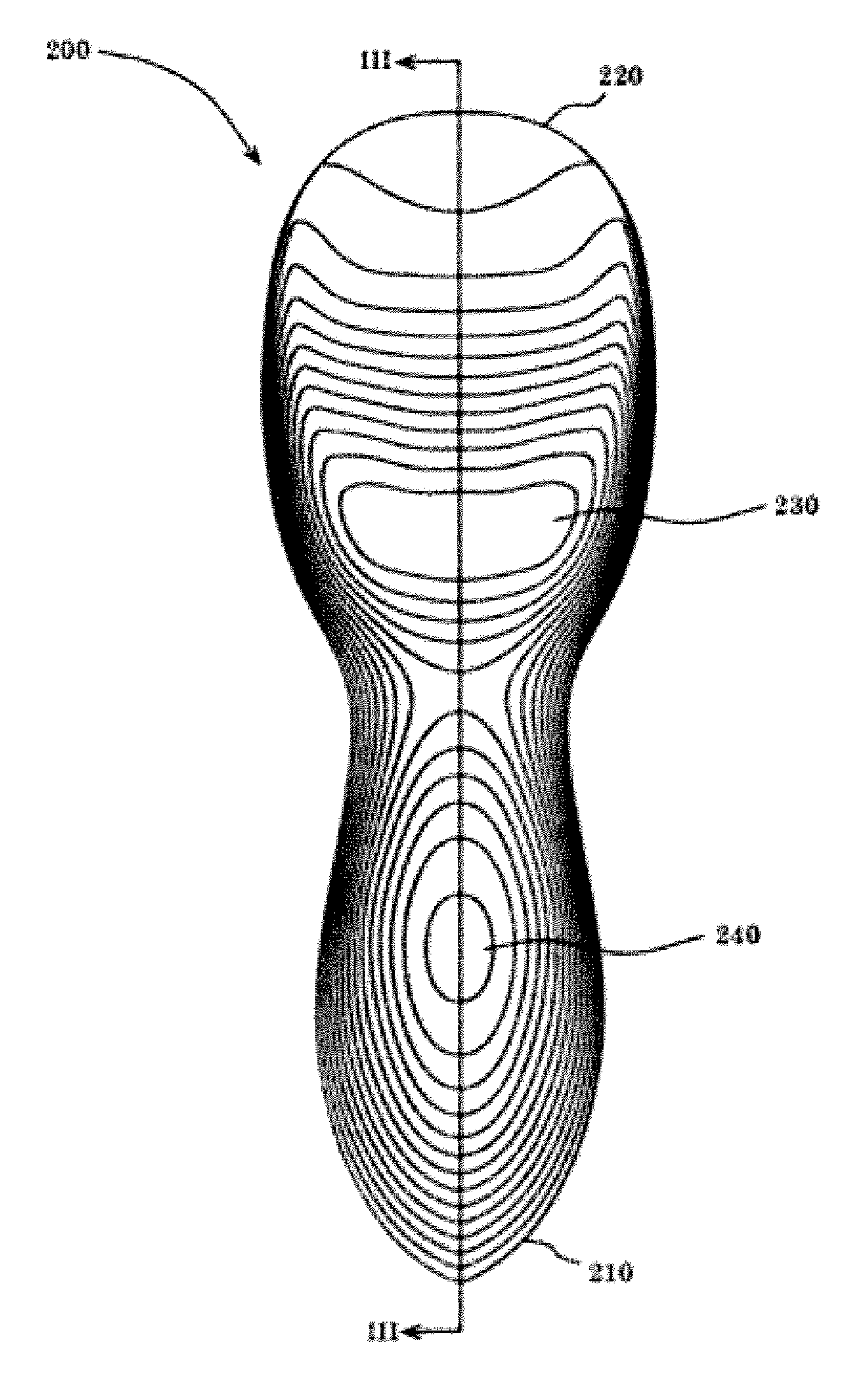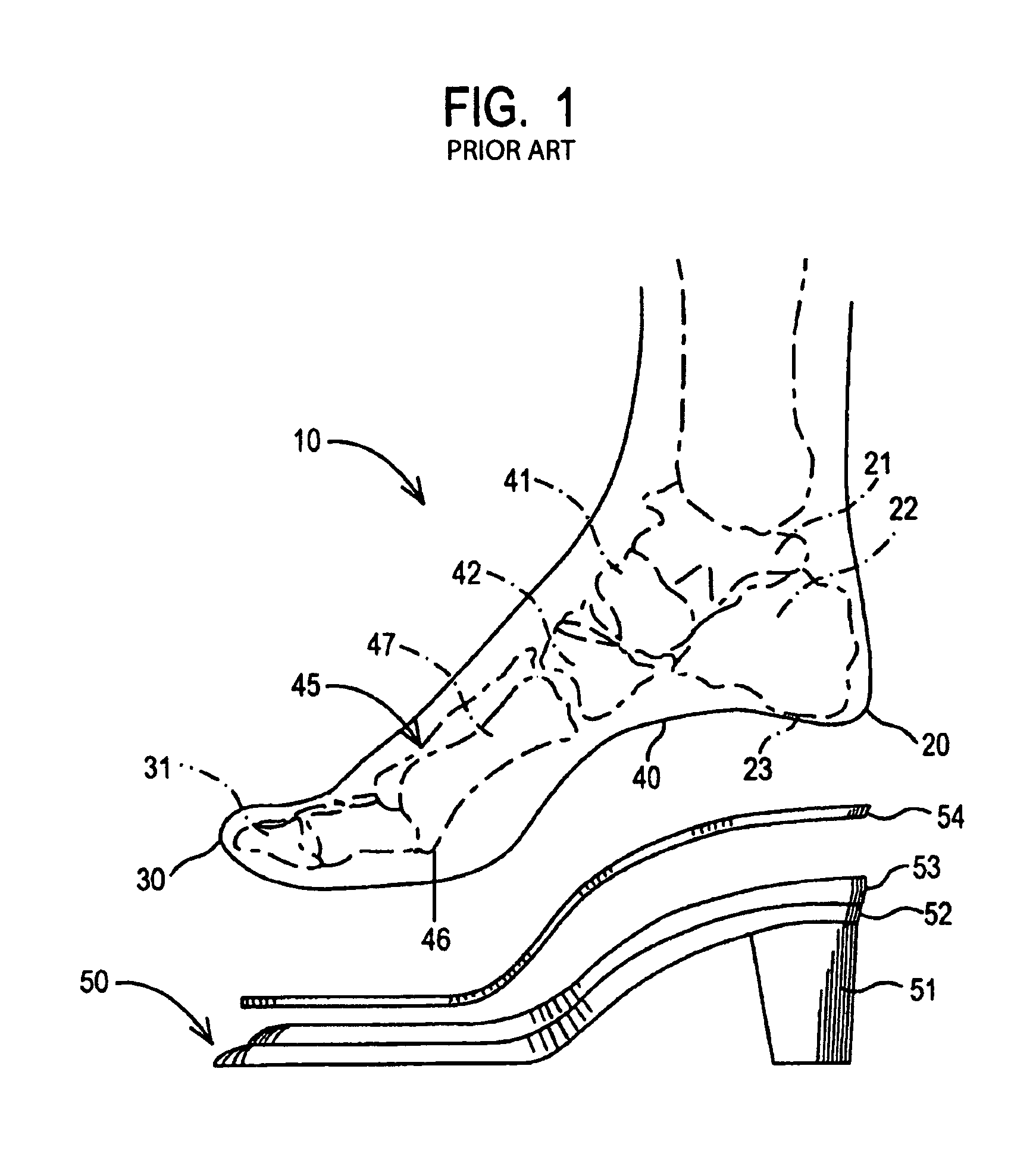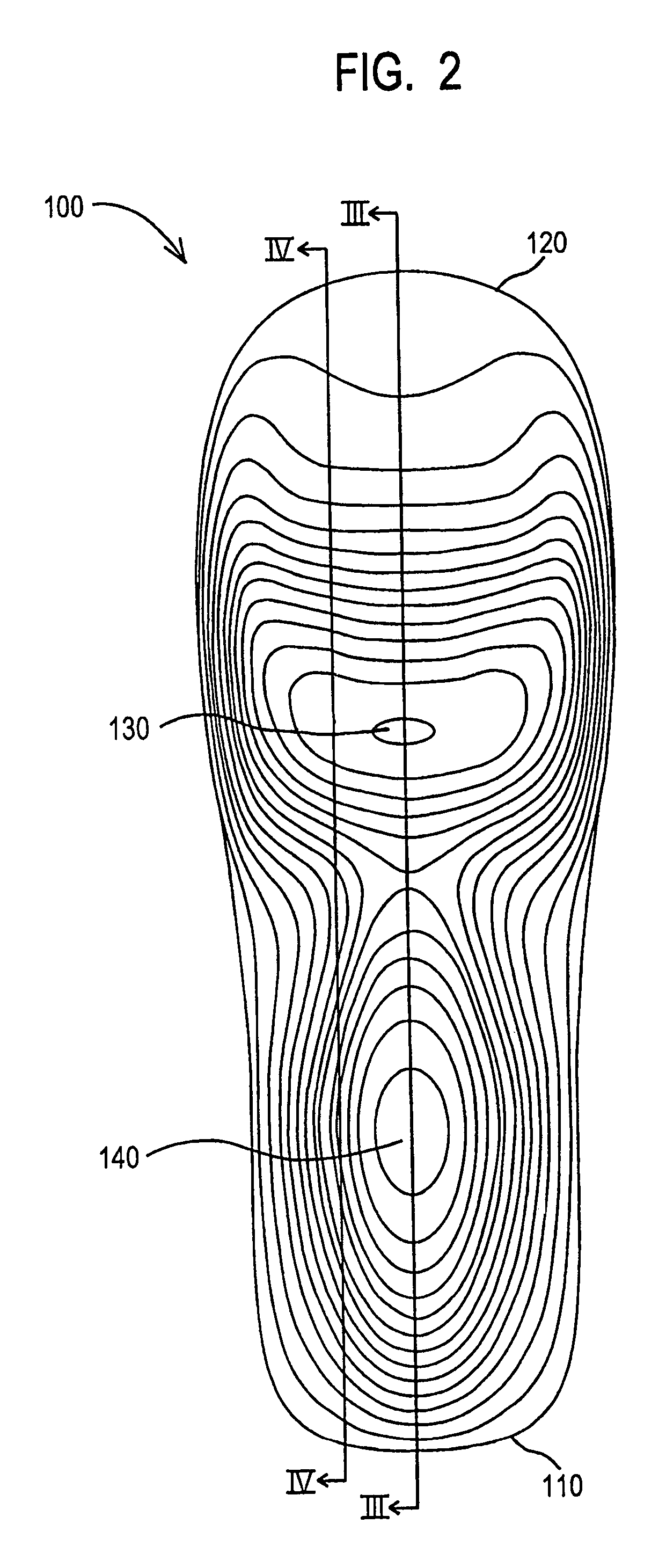Device for high-heeled shoes and method of constructing a high-heeled shoe
a high-heeled shoe and shoe technology, applied in the field of shoes, can solve the problems of burning sensation, introducing additional complexity and/or quality control issues to the manufacture of shoes, and unable to meet the needs of patients, and achieve the effect of smooth contouring
- Summary
- Abstract
- Description
- Claims
- Application Information
AI Technical Summary
Benefits of technology
Problems solved by technology
Method used
Image
Examples
embodiment 200
[0032]The bridging or middle section or area of the device between the first raised area 130 and second raised area 140 is also preferably thin relative to the raised areas. The thickness of this area is in part dictated by issues of structural integrity during the manufacturing process for the shoe. With stronger materials this area can, and ideally should be, no more than a millimeter thick. In general, this bridging or middle section or area must be thinner than the raised areas 130 and 140, and preferably is no more than about 4 millimeters thick, more preferably about 2 mm thick for a US size 6 women's shoe and about 3 mm for a US size 10 women's shoe (or their equivalents in other size scales). This thinner bridging or middle region allows the device to more easily conform to the shape of the insole. The minimum width of this bridging or middle region is also dictated by manufacturing considerations with the optimal minimum width being that which will maintain the geometry of ...
embodiment 300
[0035]As described above, the invention contemplates a single flexible device into which both raised areas are incorporated. As shown in FIG. 7, the invention also contemplates two separate flexible devices, each of which embodies one of the above-described raised areas and which together achieve the advantages of the invention. More specifically, FIG. 7 shows an alternative embodiment 300 of the device in which the forward region 310 is narrower than the rear region 320. In FIG. 7, the forward apex is element 340 and the rear apex is element 330. The invention also contemplates a single flexible device which embodies one or the other of the above raised areas and which is used in conjunction with a shoe or shoe part which incorporates the other raised area. Finally, the invention contemplates shoes into which any of the foregoing described embodiments of the device has been incorporated.
[0036]The device 100 preferably is positioned in shoe 50 during the manufacturing process. Accor...
PUM
 Login to View More
Login to View More Abstract
Description
Claims
Application Information
 Login to View More
Login to View More - R&D
- Intellectual Property
- Life Sciences
- Materials
- Tech Scout
- Unparalleled Data Quality
- Higher Quality Content
- 60% Fewer Hallucinations
Browse by: Latest US Patents, China's latest patents, Technical Efficacy Thesaurus, Application Domain, Technology Topic, Popular Technical Reports.
© 2025 PatSnap. All rights reserved.Legal|Privacy policy|Modern Slavery Act Transparency Statement|Sitemap|About US| Contact US: help@patsnap.com



